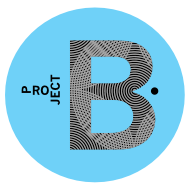
[Pamela Williams] Hers is a world of vintage photographs, found
artifacts, art and ideas. Candy wrappers, lenticular postcards,
dexterity puzzles, Victorian butterfly women, pre-1950 photo albums, and
vintage photographs are among the curious obsessions of Barbara Levine,
curator, artist, author and founder of project b. Welcome to Barbara’s
fascinating world.
Barbara, you are a lover of vintage photographs, super cool
papers, antique toys and games, and lots of accumulated ephemera. What
can you tell us about some of the pieces we’re seeing here (use scroll bar on right to view images)?
I am especially fond of ephemera and novelties which attempt a big
idea in a small package such as The Magic Moving Pictures and Life
Motion postcards. Both of these combine design, printing and photography
to create a lenticular postcard — in effect a portable moving
picture.
The lenticular process was introduced by a French painter, G. A.
Bois-Clair, in 1692.

Generally speaking, his idea was to divide two or more pictures
into “stripes” and align them behind a series of vertically aligned
“opaque bars” of the same frequency. As a viewer walked by his
paintings, they would appear to change from one picture to another. In
1896 the technique was applied to photography and the Vari-Vue Company
(famous for its 1950s flicker rings and hypnotic discs) now makes
software so you, too, can make lenticular 3D photographs.
On my website, projectb.com, you will see some of my collecting and curatorial interests
including vernacular photography, dexterity puzzles and objects and
images related to memory, visual amusement and the suspension of
disbelief. For example, I have a small collection of Victorian butterfly
women — images of women that have been altered so they appear to be
half woman and half butterfly. The collage below is a postcard of a
butterfly, the surface is embossed, and someone has pasted a woman’s
head on the surface of the card — fantastic!
For a long time I collected photograph albums made before 1950. My books Snapshot Chronicles and Around The World: The Grand Tour in Photo Albums [Princeton Architectural Press, both designed by Martin Venezky] are about the under-recognized creativity found in
early photograph albums. The collection is now part of the International Center of Photography's permanent collection. Unlike an individual photograph, an album presents a design challenge. The page doesn’t dictate where those pictures are to go. I’m interested in where the maker put the pictures and how they sequenced them on the page and on the pages thereafter. There are all kinds of albums, so many of them dearly conventional, but what I consider to be distinctive about the collection is the presence and expression of the unconventional imaginative voice. “A ‘Million’ Friends Are You Among Them” is an example of the unusual compositions amateur photographers and scrapbookers made in their personal memory albums.
 Old paper ephemera seems to find its way into your own artwork and collages. Tell us about your work.
Old paper ephemera seems to find its way into your own artwork and collages. Tell us about your work.
Collage and assemblage are consistent ways I can interact with
and integrate my various interests and materials. As long as I can
remember, I have accumulated paper bits and scraps, notes, cigar box
trimmings and labels, trade cards, catalogues, vintage dime store toys,
illustrations, maps, wrappers, etc. I like to use different paper
textures and graphics to create scenes and narratives such as the
collage below showing a solar system presided over by poodles
(unbeknownst to scientists looking up).
Candy wrappers and dogs seem to come up a lot in your art. And that’s because …
… I love dogs and eat a lot of candy! If it is an interesting,
beautiful or funky candy wrapper I will save it. A couple of years ago I
took the wrappers from all the candy I had eaten during the year, bound
them together and made a little book for Valentine’s Day.

With all the curiosities you amass, tell us the truth: How do you manage all your collections?
Display and bulletin boards are ways I work out all types of ideas. Some
have said the studio looks like a cross between a museum, junk store
and design office. I am inspired by having interesting and beautiful
things around me. The only way I manage the collections is by keeping
them in boxes which is great for keeping the studio looking organized,
but once you lift the lid off a box it is (gorgeous) chaos!
